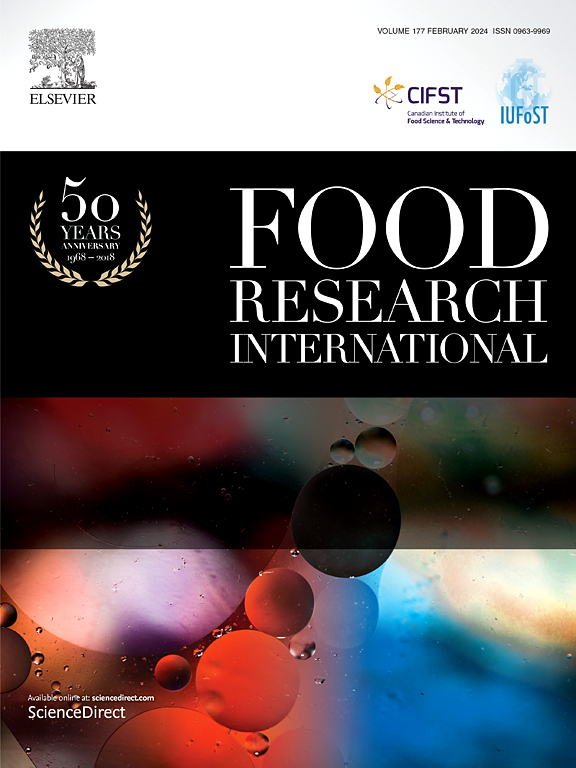Metabolomic analysis elucidates the dynamic changes in aroma compounds and the milk aroma mechanism across various portions of tea leaves during different stages of Oolong tea processing
IF 7
1区 农林科学
Q1 FOOD SCIENCE & TECHNOLOGY
引用次数: 0
Abstract
This study investigated the dynamics of aroma compounds in different locations of tea leaves at various stages of the Oolong tea-making process via metabolomics analysis and ribonucleic acid (RNA) gene transcriptome analysis of metabolism-related enzymes. In addition, this study focused on examining the composition and metabolic synthesis pathways of milk flavor compounds during the processing of Jin Xuan Oolong tea. This study showed that a total of 57 aroma compounds were identified, whereas the abundance of the heat map showed a decreasing abundance of these compounds from the first leaves to the stems. The milky aroma compounds were divided into two groups based on changes during the leaf-stirring process (shaking). Specifically, hexanal, 1-octen-3-ol, and trans-2-decanal decreased throughout this process. In contrast, heptanal, limonene, and jasmone increased, producing Oolong tea with a milky fragrance. Moreover, the results of this study on gene expressions of metabolic enzymes and fatty acid contents indicated the milky flavor compounds were derived from fatty acid metabolism. Therefore, this study provides theoretical support and information on the knowledge of Oolong tea processing, which potentially allows the tea industry to improve the quality of the tea to bring this fantastic flavor to consumers.

求助全文
约1分钟内获得全文
求助全文
来源期刊

Food Research International
工程技术-食品科技
CiteScore
12.50
自引率
7.40%
发文量
1183
审稿时长
79 days
期刊介绍:
Food Research International serves as a rapid dissemination platform for significant and impactful research in food science, technology, engineering, and nutrition. The journal focuses on publishing novel, high-quality, and high-impact review papers, original research papers, and letters to the editors across various disciplines in the science and technology of food. Additionally, it follows a policy of publishing special issues on topical and emergent subjects in food research or related areas. Selected, peer-reviewed papers from scientific meetings, workshops, and conferences on the science, technology, and engineering of foods are also featured in special issues.
 求助内容:
求助内容: 应助结果提醒方式:
应助结果提醒方式:


